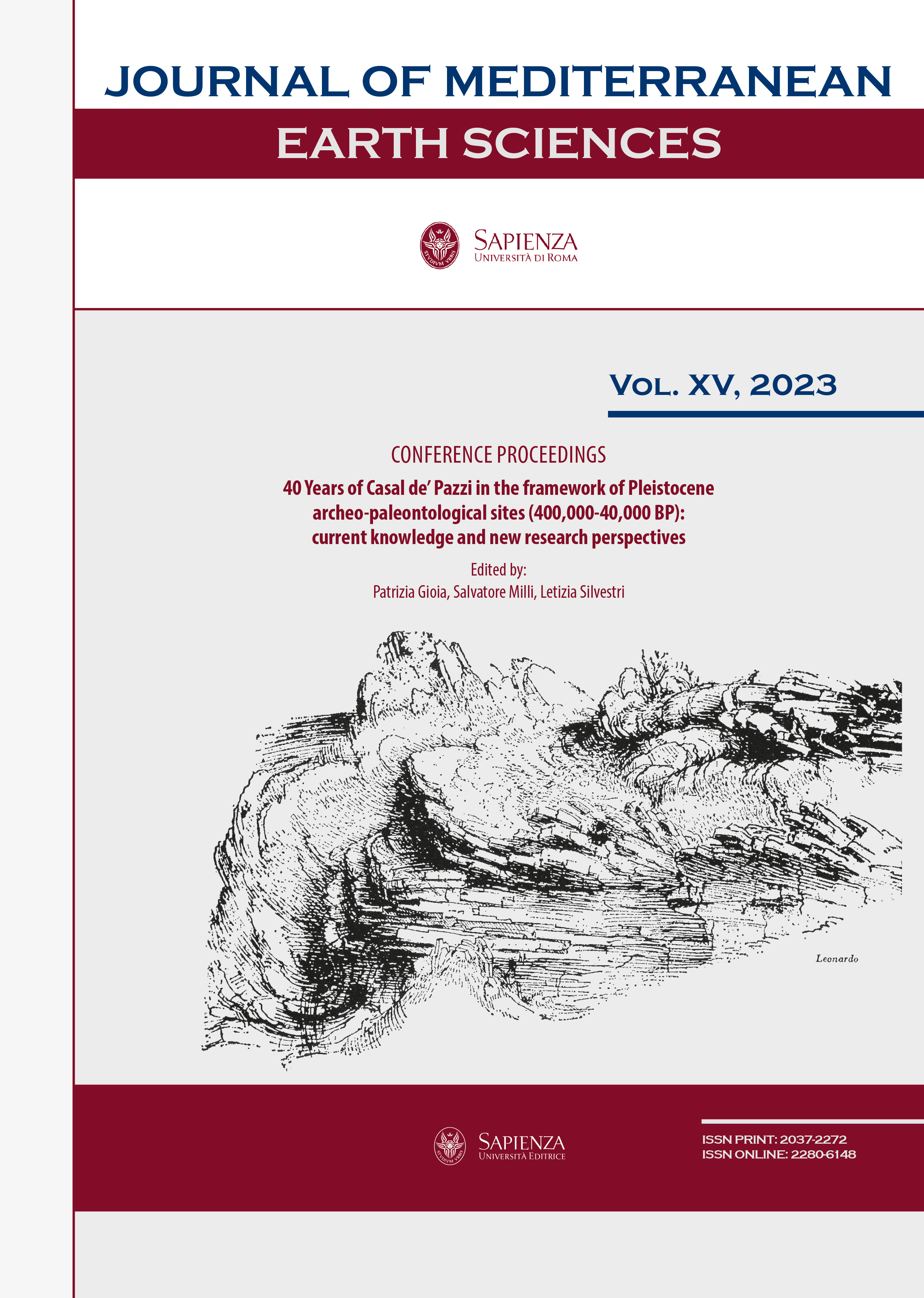Rebibbia-Casal de’ Pazzi: discovery and first investigations of the site documented through the archives of the Istituto Italiano di Paleontologia Umana (Italian Institute of Human Paleontology)
DOI:
https://doi.org/10.13133/2280-6148/18176Abstract
Since its foundation, the Istituto Italiano di Paleontologia Umana (Italian Institute of Human Paleontology) has been a point of reference for the development of paleontology and prehistoric archeology in Italy. Particularly in Lazio, the Institute’s scholars excavated several sites, and thanks to their constant presence and systematic surveys during major building works in the Rome area, they significantly contributed to research developments and the discoveries, during the 20th century, of several well-known sites referable to the Lower and Middle Paleolithic. The activities carried out were accurately recorded in scientific reports, excavation diaries, or simply in notes, accompanied by drawing, maps, and sections with relevant remarks for the subsequent sites’ interpretations. All the field documentation, enriched by a large photographic collection, is preserved in the historical archive of the Institute, which was recently enlarged thanks to the donation of Aldo G. Segre’s personal collection, which had previously incorporated part of Alberto Carlo Blanc’s archive. When the site of Casal de’ Pazzi is concerned, it is important to notice that in the years immediately preceding the ‘official’ discovery of the site, the Sopraintendenza Archeologica with the scientific support of the Istituto Italiano di Paleontologia Umana carried out surveys of the yards near the site area, to investigate the vertebrate paleontology and local geology. The Institute’s original documentation shows that banks of fluvio-lacustrine deposits containing fauna had already been identified, and the recovered faunal remains were arranged in the Institute for research activities. When the deposit was identified in 1981 the ongoing collaboration continued; in fact, the first studies and the original geochronological interpretations are documented in the archive of the Institute. Some photographs and original stratigraphic sections by Aldo G. Segre and collaborators particularly significant in this regard are published here for the first time.
Downloads
Published
How to Cite
License
The submission has not been previously published, nor is it before another journal for consideration (or an explanation has been provided in Comments to the Editor).


